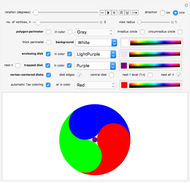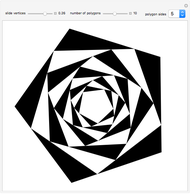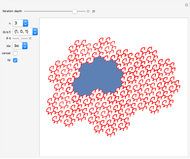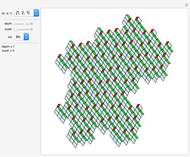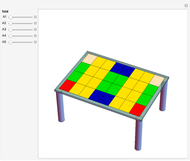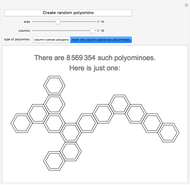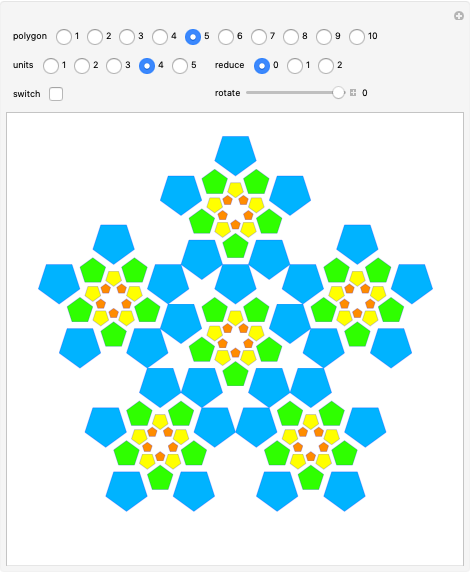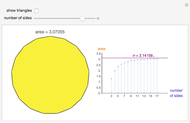Geometric Series Based on Area Ratios of Similar Polygons

Requires a Wolfram Notebook System
Interact on desktop, mobile and cloud with the free Wolfram Player or other Wolfram Language products.
This Demonstration shows a graphical representation of the sum of a convergent geometric series for the area of similar polygons. Let  be the area of the original polygon and let
be the area of the original polygon and let  be the ratio of one polygon in a sequence to the next.
be the ratio of one polygon in a sequence to the next.
Contributed by: Joshua E. Emrick and Steven M. Hetzler (December 2019)
Open content licensed under CC BY-NC-SA
Details
Let  represent the area of the largest polygon. Then
represent the area of the largest polygon. Then  ,
,  ,
,  , … are the areas of the successive smaller polygons. Each polygon's area
, … are the areas of the successive smaller polygons. Each polygon's area is equal to the area of a collar:
is equal to the area of a collar:  plus the area of a smaller similar polygon
plus the area of a smaller similar polygon  . For example, in Snapshot 1, the area of the largest triangle is
. For example, in Snapshot 1, the area of the largest triangle is  ; then the area of the next largest triangle is
; then the area of the next largest triangle is  and the area of the collar is
and the area of the collar is  .
.
References
[1] E. M. Markham, "Geometric Series IV," Proofs without Words: Exercises in Visual Thinking (R. B. Nelsen, ed.), Mathematical Association of America, 1993 p. 123.
[2] E. M. Markham, "Proof without Words: Geometric Series," Mathematics Magazine, 66(4), 1993 p. 242. doi:10.2307/2690738.
Snapshots
Permanent Citation










